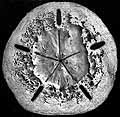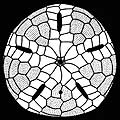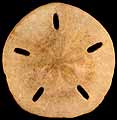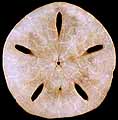The Echinoid Directory
Astriclypeus Verrill, 1867, p. 311
[=Crustulum Troschel, 1868, p. 1 (subjective) ]
| Diagnostic Features |
|
|---|---|
| Distribution | Late Oligocene to Recent, Japan and south China coast south to Cambodia. |
| Name gender | masculine |
| Type | Astriclypeus mannii Verrill, 1867, p. 311 by monotypy. |
| Species Included |
|
| Classification and/or Status |
|
| Remarks |
|




